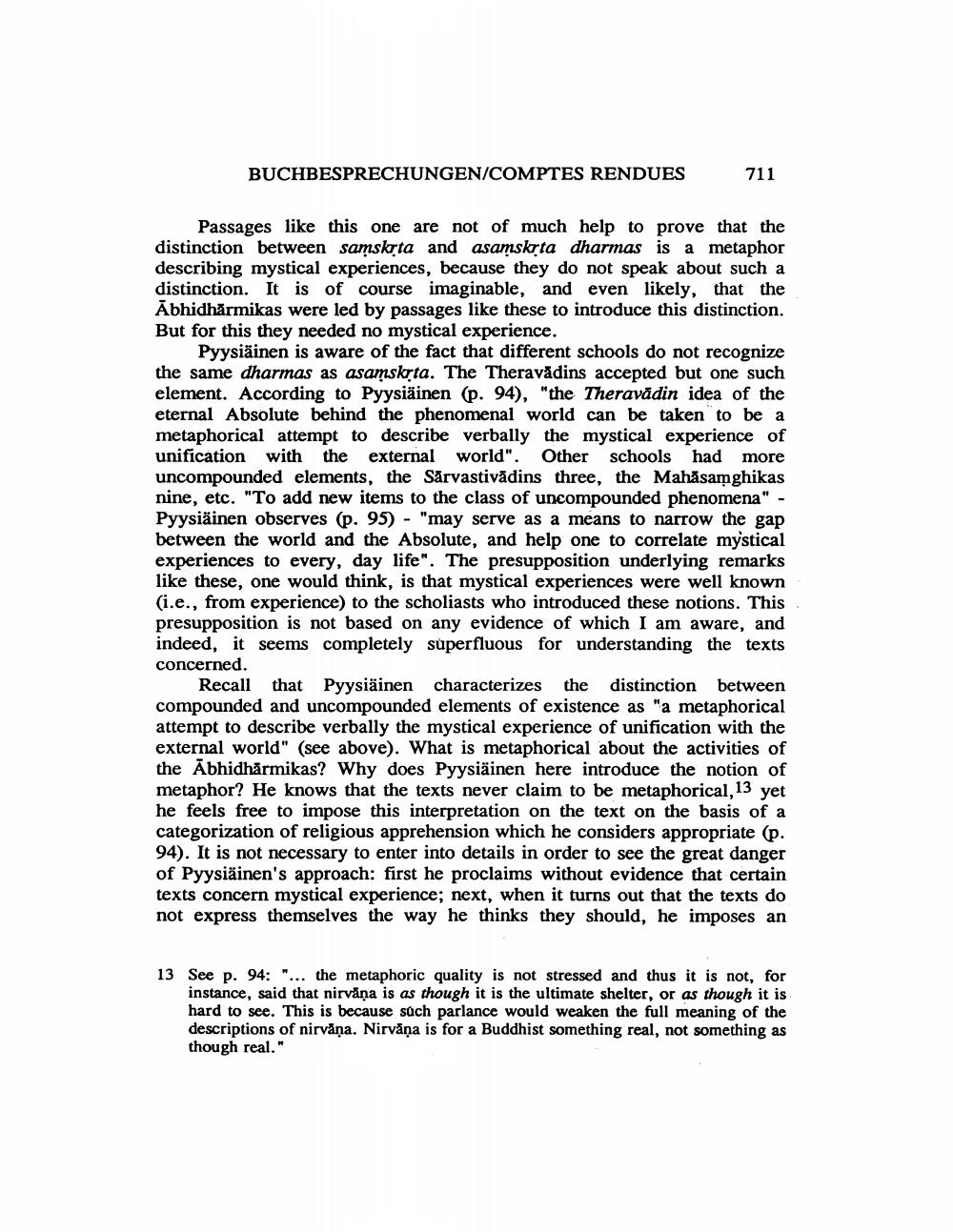Book Title: Buchbesprechungen Comptes Rendus Author(s): Johannes Bronkhorst Publisher: Johannes Bronkhorst View full book textPage 3
________________ BUCHBESPRECHUNGEN/COMPTES RENDUES 711 Passages like this one are not of much help to prove that the distinction between samskrta and asamskrta dharmas is a metaphor describing mystical experiences, because they do not speak about such a distinction. It is of course imaginable, and even likely, that the Abhidhārmikas were led by passages like these to introduce this distinction. But for this they needed no mystical experience. Pyysiäinen is aware of the fact that different schools do not recognize the same dharmas as asamskrta. The Theravadins accepted but one such element. According to Pyysiäinen (p. 94), "the Theravādin idea of the eternal Absolute behind the phenomenal world can be taken to be a metaphorical attempt to describe verbally the mystical experience of unification with the external world". Other schools had more uncompounded elements, the Sārvastivādins three, the Mahāsamghikas nine, etc. "To add new items to the class of uncompounded phenomena" - Pyysiäinen observes (p. 95) - "may serve as a means to narrow the gap between the world and the Absolute, and help one to correlate mystical experiences to every, day life". The presupposition underlying remarks like these, one would think, is that mystical experiences were well known (i.e., from experience) to the scholiasts who introduced these notions. This presupposition is not based on any evidence of which I am aware, and indeed, it seems completely superfluous for understanding the texts concerned. Recall that Pyysiäinen characterizes the distinction between compounded and uncompounded elements of existence as "a metaphorical attempt to describe verbally the mystical experience of unification with the external world" (see above). What is metaphorical about the activities of the Ābhidhārmikas? Why does Pyysiäinen here introduce the notion of metaphor? He knows that the texts never claim to be metaphorical, 13 yet he feels free to impose this interpretation on the text on the basis of a categorization of religious apprehension which he considers appropriate (p. 94). It is not necessary to enter into details in order to see the great danger of Pyysiäinen's approach: first he proclaims without evidence that certain texts concern mystical experience, next, when it turns out that the texts do not express themselves the way he thinks they should, he imposes an 13 See p. 94: "... the metaphoric quality is not stressed and thus it is not, for instance, said that nirvana is as though it is the ultimate shelter, or as though it is hard to see. This is because such parlance would weaken the full meaning of the descriptions of nirvana. Nirvana is for a Buddhist something real, not something as though real."Page Navigation
1 2 3 4 5 6 7
